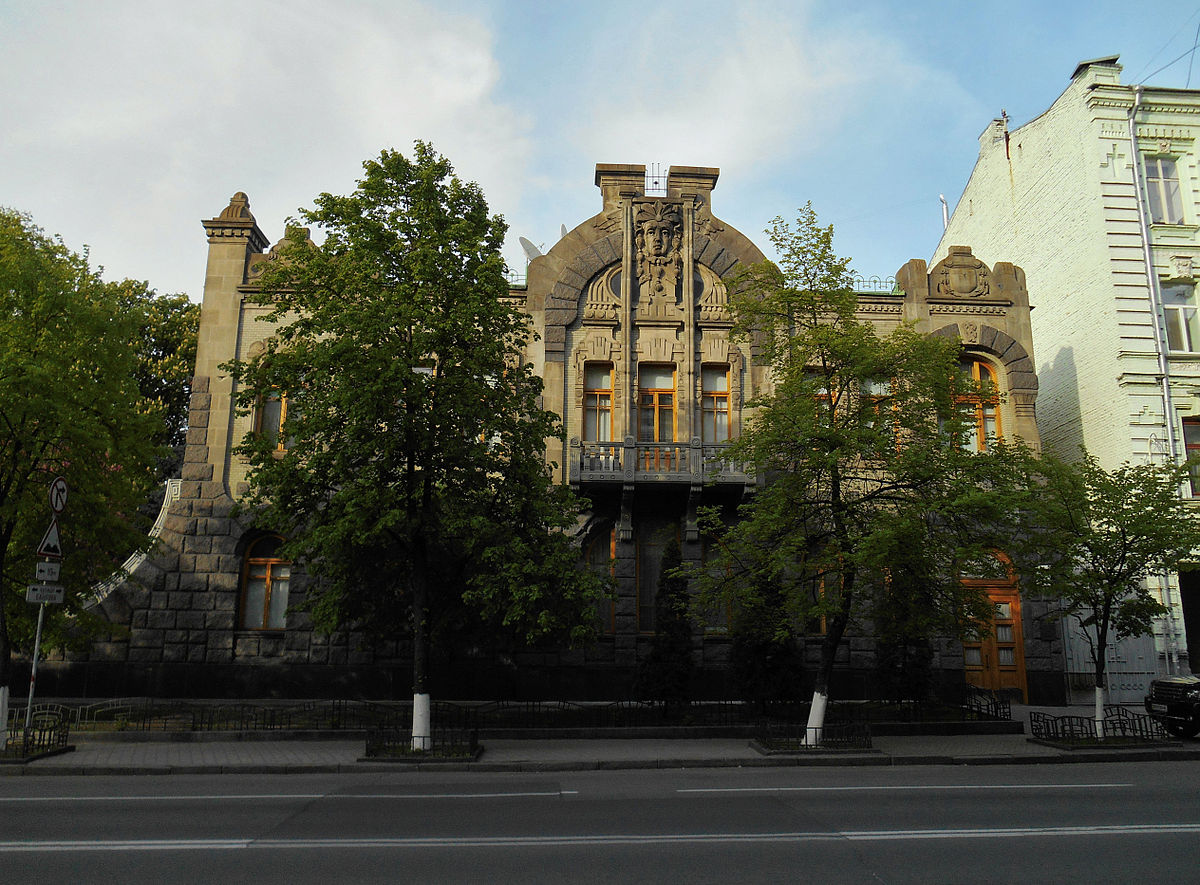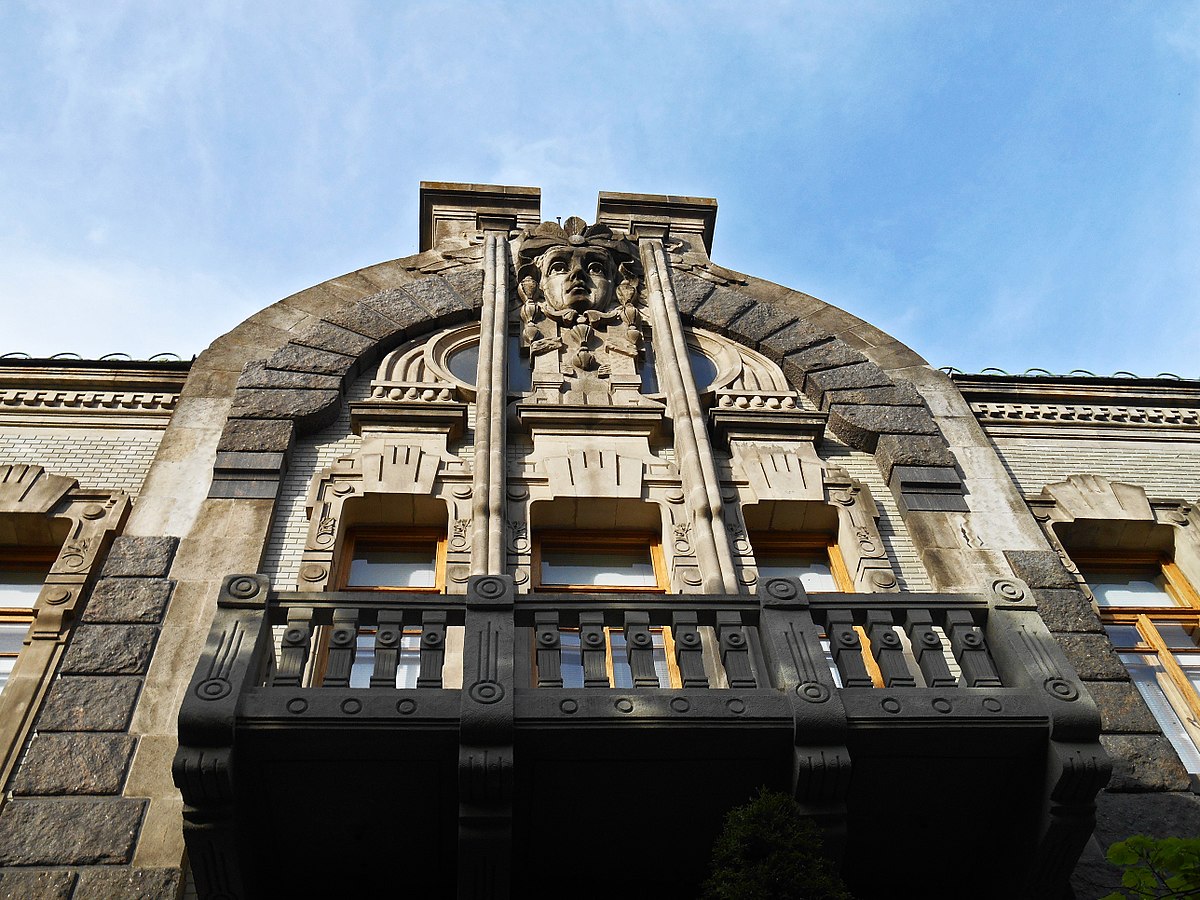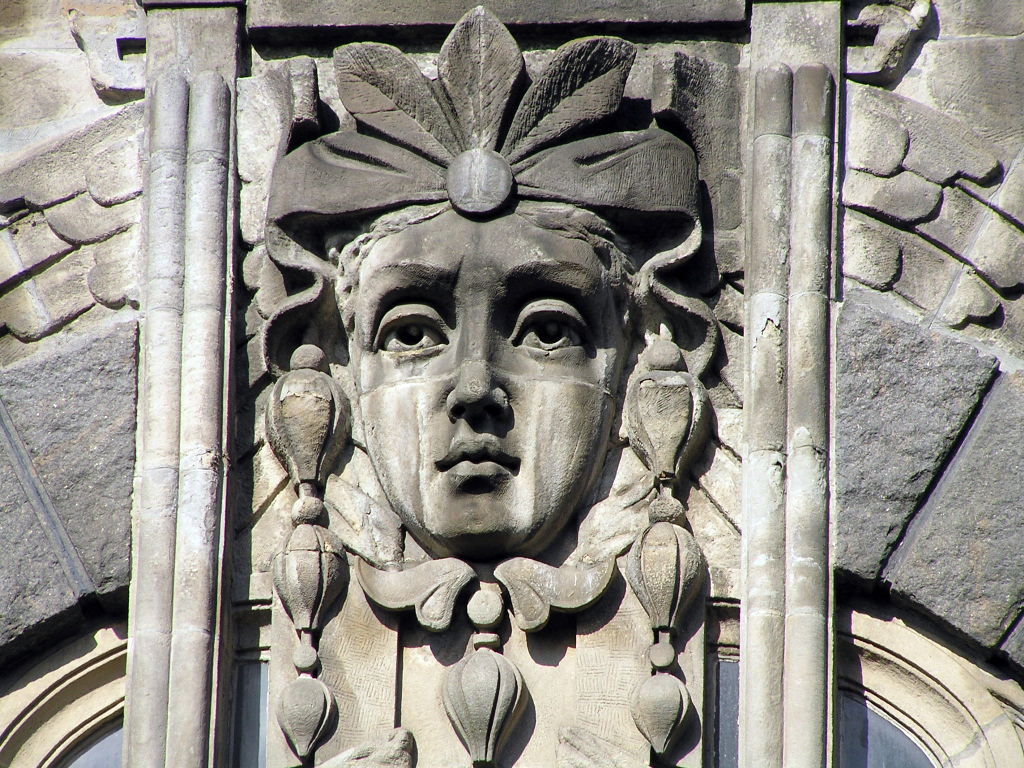The House of the “Weeping Widow” is an architectural monument of local importance, which was built in 1908 according to the design of the architect Eduard Bradtman (was also built according to his design Ivan Franko Theater, Kiev Conservatory, house of Baron Gesselbein) in the early modern style for the Poltava merchant of the 2nd guild Sergei Arshavsky. The monogram “SA” on the façade of the building still reminds us of the first owner. The floor plan was a separate 10-room apartment. The premises included: a kitchen, a buffet, a wine cellar, a refrigeration room, and a laundry room. Initially, the estate had an adjacent garden measuring 570 square meters. Why did the mansion become known as the house of the “weeping widow”? Nothing is known for certain, but on the façade at the top there is a picture of a woman’s face with tears running down her cheeks – that’s why the building got its name.
Since 1913, the estate was purchased by the Kyiv merchant of the 1st guild Toviy Apshtein. Coincidentally, the initials of Apstein’s sons (Solomon and Samuel) coincided with the original “SA” monogram. In 1918, the building was nationalized, after which it housed the Federation of Foreign Groups under the Central Committee of the RCP (b). There was also a Special Department of the 12th Army and the trade union of the South-Western Railway.
Three years after Ukraine gained independence, in 1994 the estate became one of the official residences of the President of Ukraine. The Ukraine-EU summit took place in the Arshavsky mansion.
The house of the “weeping widow” is made in the Art Nouveau style – asymmetrical, with semi-circular windows, with a cement rustication on the first floor. The facade is made of yellow brick and finished with wrought iron, granite, cement moldings, labradorite and olive ceramic tiles.
Each floor of the house consisted of ten rooms, an entrance hall and a pantry. The main staircase is decorated with marble, and the “black” staircase is decorated with granite. In the basement there was a water heating boiler room, laundries and wine cellars. At the mansion there was a large garden, where there were two-story stone storage rooms, ice chambers, a room for a janitor, a room for a driver and sheds for cars. In the basements of the utility rooms there were wood and coal warehouses. Sewage and water supply were connected not only to the house, but also to the yard.
Not far from the house of the “crying widow” there are many other attractions and interesting places, namely: Kovalevsky’s mansion, “chocolate” house, Liberman’s mansion, monument to Nikolai Yakovchenko, house with chimeras.
Where is the house of the weeping widow (Arshavsky mansion)?
Luteranskaya street, 23


